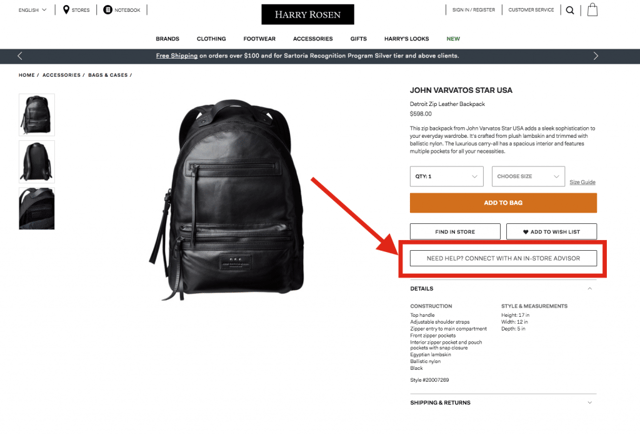
Data data data. Seems like everywhere you turn these days, it’s being thrown around as the answer to all of your woes, but when you dig deeper, it’s impossible to figure out how to leverage it to solve anything.
Most retailers these days don’t have a problem with data – they have plenty of it! With more and more technology, we have data about our supply chain, sales numbers, customer preferences, and much, much more. The problem is how do we harness this data to make meaningful changes in our customers’ lives?
We think about that a lot, too, so we’ve put together five examples of retailers that are harnessing customer data to increase sales and create happy customers.
1. Modcloth

If you aren’t familiar with Modcloth, it is an indie fashion site, carrying a mixture of vintage and vintage-inspired fashion. Or, at least until it was recently acquired by Jet.com and Walmart, it was.
Either way, it has a strong community of users that buy up their new arrivals faster than they can post them. The reason that they have this level of commitment and success is due to their incredible openness to customer input in their merchandising program.
Up until the recent acquisition, they had a feature called “Be the Buyer” on their site that invited their customers to vote on the items that were to be added to the store:
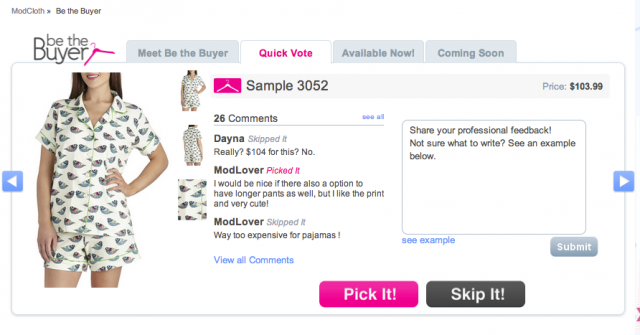
This popular feature worked two-fold: they were able to improve their merchandising as well as sell products before they even hit the site. Those that voted on items would be notified when they were available in the store.
2. Sephora

Reviews and star ratings on a website are quite often more confusing than helpful, but Sephora is a retailer who has learned to leverage the right kinds of reviews to tip confused customers in the right direction.
I’ve often looked at a lip color online and wondered how it would look on me – with my fair skin and hair. Enter Sephora’s Beauty Board, where tens of thousands of customers have uploaded themselves wearing various lipsticks, eyeshadows, blushes and more:
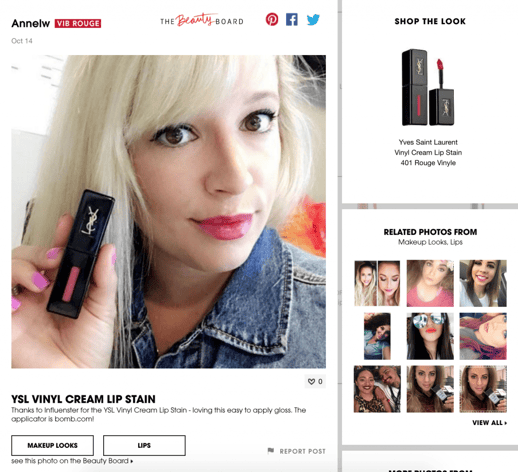
3. Harry Rosen

Some sales are lost because the customer is just plain overwhelmed with choice or an inability to do something as simple as putting an outfit together. Harry Rosen solves this by connecting their online customers to in-store advisors through Salesfloor Connect™. This allows them to increase customer engagement by integrating their own links, buttons, banners or other call-to-actions within product pages as they look native to the site (as seen below). Recent results showed that service requests by customers increased by up to 50% after retailers integrated Salesfloor Connect™ directly within site pages.
This means that a customer who comes to the site and feels a little lost can reach out to their closest associate. They can start a conversation, search for an advisor and explore their profiles to see one whose style suggestions match their tastes, and get the help they need to make the right decision.
They can even request an appointment to go into the store to get full-service help and reserve products in-store with click and collect. This has been a successful strategy for Harry Rosen. All in all, the in-store sales impact of associates serving the online customer is that for every $10 sold online by associates leveraging Salesfloor, $4 in sales was driven in-store..
4. Saks Fifth Avenue
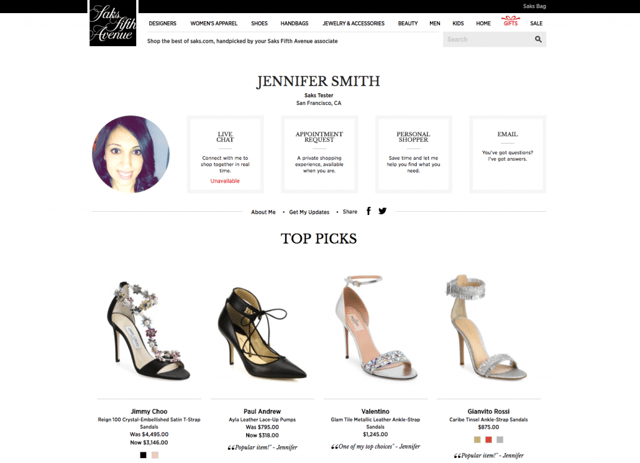
For customers who are more about browsing and discovering hot new items, data is useful for this, too. Another Salesfloor customer, Saks Fifth Avenue, is using an associate Storefront, which gives them access to the newly released Most Recommended feature to further customize recommendations to their clients.
How it works is that the Salesfloor’s Associate Data Cloud pulls in data from activities across all stores in the network and displays to shoppers what the most recommended products are that day. Displayed in order by the number of recommendations, the section is automatically populated with the product name, image and price and updated daily. When a shopper clicks on the image, they are navigated to the product detail page on the retailer’s website. The shopper can then continue to shop with their associate as the footer is accessible across the site. They can also live chat or send an email at any time.
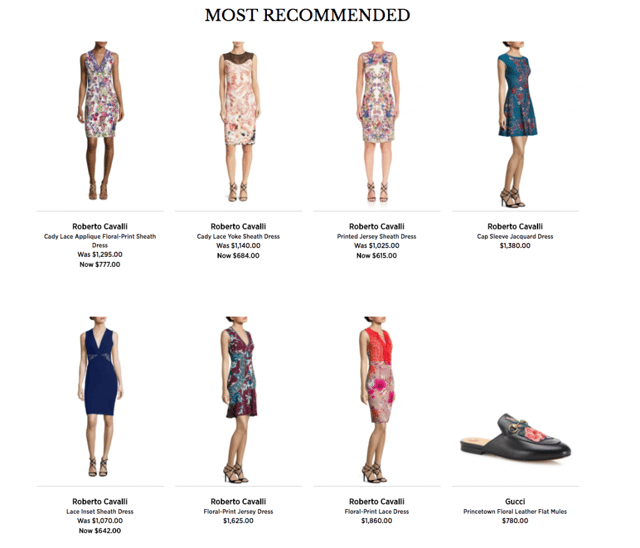
[according to these recommendations, it must be Spring dress shopping time!]
What this means is that the customer will get recommended the hottest new items fresh every day. If you are a customer who loves to discover the latest greatest, this use of data will definitely excite you.
5. Target
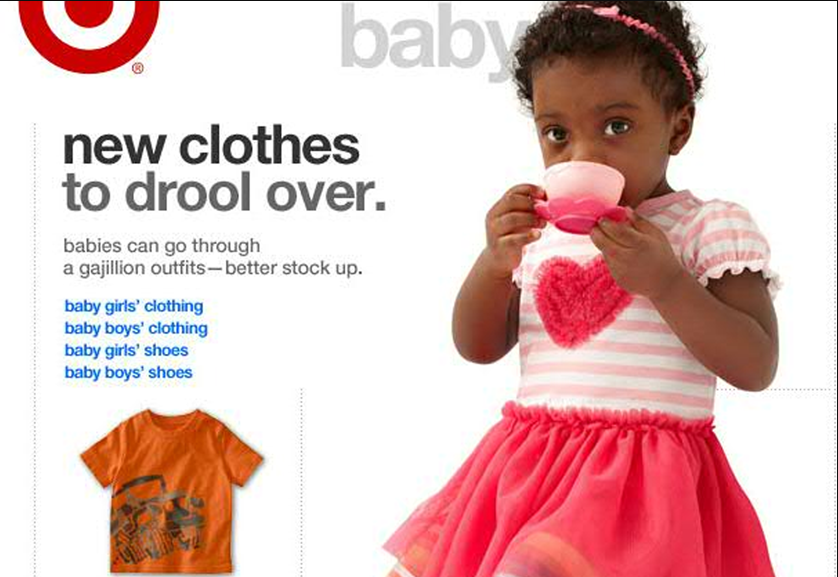
Though the media has made it seem like a bit of a boogeyman to customers, predictive analytics is more useful than nefarious. Almost everyone is familiar with the story of how a father found out his daughter was pregnant through Target’s predictive algorithm (this may or may not have been a viral hoax), illustrating how far predictive analytics has come. Though you never want to move into creepy territory, understanding what your customers are buying and mapping buying patterns in general may help you to better serve your customer’s needs.
If someone buys a bathing suit in winter, you can probably infer that they are planning a warm vacation. It makes sense to follow up that purchase with other items frequently purchased for a winter getaway. If someone starts looking at maternity clothes, it’s pretty safe to say they’ll need baby items in 6 months or so.
As long as you don’t push your boundaries too far – like sending a congratulations note – your customers will feel better served.
The Bottom Line
These are just a few examples of retailers using data to make happier customers and, ultimately, drive more sales. Salesfloor wants your brand to be added to this list of retailers that are creating a single unified customer experience no matter where shoppers are visiting them.



